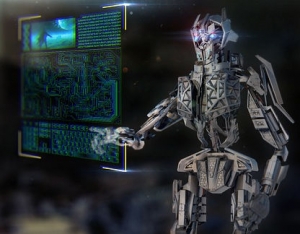Artificial intelligence (AI), including chatbots, is definitely on the horizon for retail in the future, according to a new Juniper Research report.

The company predicts the global number of successful retail chatbot interactions will reach 22 billion by 2023, up from an estimated 2.6 billion in 2019.
Tech-savvy retailers will increase their use of automated customer interactions enabled by dramatically improved natural language processing (NLP), which will make the use of chatbots more natural and useful for customers. The result will be some noticeable returns on this AI investment.
Research author Nick Maynard explained: “By embracing automated customer service with chatbots, retailers can act in a more flexible and efficient way. The wider retail market means that chatbots are no longer a luxury, they are essential.”
The AI-retail landscape

Retail sales resulting from chatbot-based interactions could reach $112 billion by 2023, up from just $7.3 billion in 2019, representing an annual growth rate of 98%.
With that potential on the horizon, the report identifies 13 companies that have generated more than $200 million in venture capital financing in the artificial intelligence space in 2018/19 alone. Among the potential AI disruptors are Trax ($125M), Thread ($24.2M), Vilene ($20M), Tinyclues ($18M), Deepomatic ($6.2M), and DataSine ($5.2M).
How AI can revive retail

The use of AI in retail covers a diverse range of applications including personalization, demand forecasting, and supply chain analytics, customer analytics, marketing, payment provider analytics, and chatbots.
Juniper cited Walmart as an example of the complexity and challenges faced by major retailers. Walmart has 11,348 retail units, 1.5 million employees in the US alone, and more than 100,000 items in each store. Demand forecasting, supply chain analytics, sales and pricing, location, and previous sales data are ripe for deeper insight and efficiencies provided by AI.
“These systems can be augmented by the addition of newer, IoT-based insights. These include sensors on logistics or delivery vehicles, beacons in-store or other sources of data. Forecasting can also be augmented from data from e-commerce, such as click-through rates on particular items and cart abandonment rates,” the report says.
What’s the AI ROI?

Juniper says chatbots leveraged for customer service have strong potential to reduce costs by realizing annual savings for retailers of $439 million globally by 2023, up from just $7 million in 2019.
Standard applications now being utilized include advice, information, and service support. Chatbots can also be effectively deployed to improve monetization by upselling, reducing cart abandonment, time-sensitive promotions, coupons, loyalty programs, and analysis of customer preferences.
The report emphasizes that most sales increases will largely be a migration from other channels rather than a “new” revenue stream. Chatbots can help increase customer service and reduce consumer churn resulting in a strong ROI from improved efficiencies.
Global spending on AI is expected to reach $12 billion by 2023 from just $3.6 billion in 2019. Juniper predicts more than 325,000 retailers will adopt AI technology over the period.
Maynard says retailers who do not adopt chatbots and other forms of artificial intelligence will face strong challenges from more technologically adept disruptors, who will use chatbots as a natural extension to the crucial omnichannel retail experience.
You can download and view a free copy of the Juniper Research whitepaper How AI Can Revive Retail here.








LET’S CONNECT